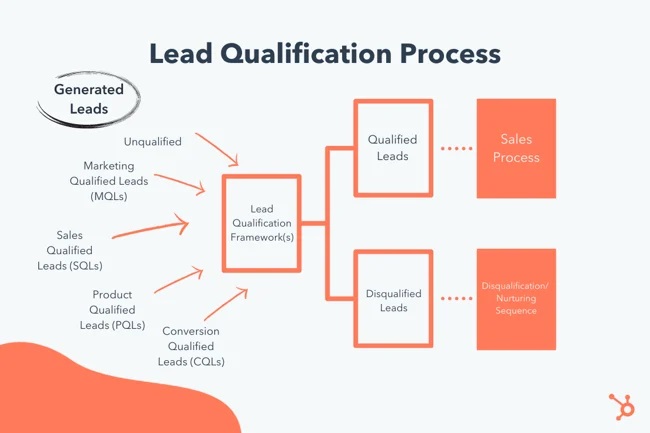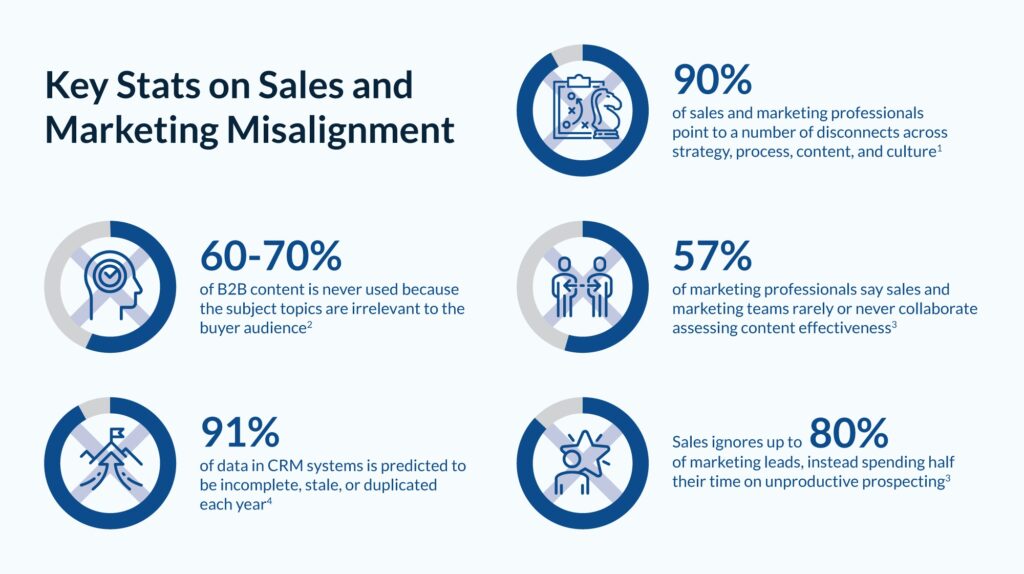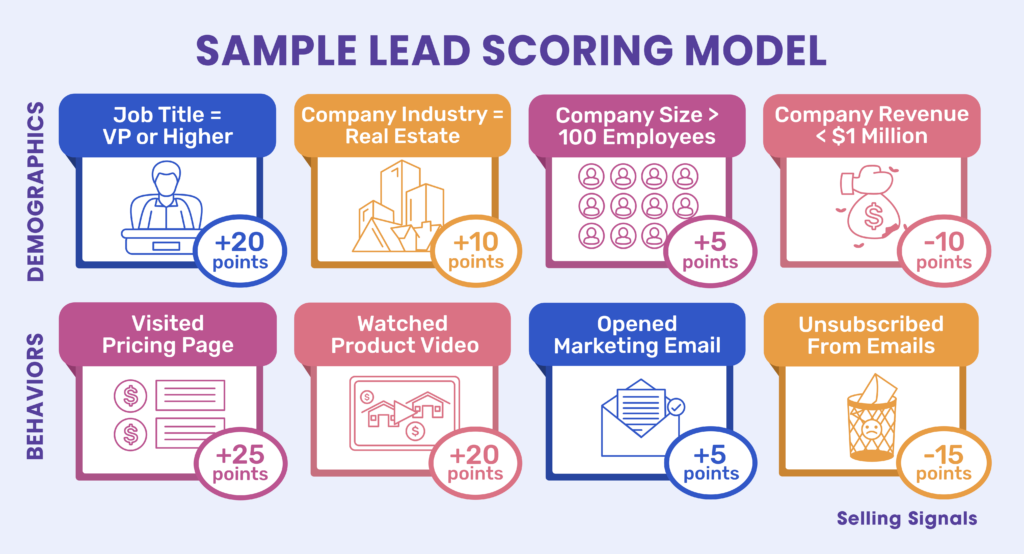The Lead Qualification Process: Define It and Refine It
Lead generation can be highly automated and executed at scale, yet generating quality leads continues to be a top challenge identified by marketing professionals. What gives? In most cases, it’s the lack of a solid and well-executed lead qualification process to evaluate and prioritize each new lead as it enters the pipeline.
Without a lead qualification in place, your marketing and sales teams are at risk of wasting time chasing leads that may never convert. To boot, it will be nearly impossible to understand the true potential of your current pipeline at any given time—not just how many leads are in it, but how many are likely to actually convert to closed deals.
In this guide, we’ll cover how you can create a lead qualification process that’s defined, efficient, and able to align your marketing and sales teams for seamless lead engagement at every stage.
Quick Takeaways
- Lead qualification assesses a lead’s fit with your target customer profiles and their readiness to make a purchase.
- Key steps in the lead qualification process include defining ideal leads, aligning your marketing and sales teams, scoring leads as they enter the pipeline, and conducting initial outreach.
- Lear qualification should be an ongoing effort that drives continual improvement.
What is lead qualification?
By definition, lead qualification is the process of determining a new lead’s readiness for specific stages of the pipeline—namely, marketing, sales, and final purchase. It also involves assessing a set of criteria to evaluate the fit between each new lead and your ideal customer profile.
The purpose of lead qualification is to identify the highest-potential leads entering your pipeline and fast track their path to final purchase by putting them in touch with the right people on your team. Further, you can funnel leads that still need cultivation into a nurturing pipeline that builds higher engagement and readiness to buy.

Leads generally fall into three qualification categories:
- Marketing Qualified Lead (MQL) — High potential but not yet ready for sales outreach
- Sales Accepted Leads (SAL) — Ready for sales handoff and accepted by sales team
- Sales Qualified Leads (SQL) — Ready to enter the sales process
The power of lead qualification lies in its ability to optimize sales productivity and efficiency. By qualifying leads, your teams can focus their time and attention on the prospects who will translate to revenue for your business. As a result, you can become more profitable and drive faster, more reliable growth.
7 Steps in the Lead Qualification Process
Define Your Ideal Leads
First, you need to set your lead qualification process up for success. This requires identifying the ideal leads you want to generate, including specific attributes that help you target your marketing and sales efforts intentionally.
Proven B2B frameworks for profiling ideal leads are the ideal customer profile (ICP) to describe target buyer organizations and buyer personas to describe the individual decision makers within those organizations.
Once you develop a complete picture of your ideal leads, document them for reference during the lead qualification process.
Align Your Marketing and Sales Teams
Companies with highly aligned marketing and sales teams have generally proven to grow faster and be more profitable. But from a lead generation and qualification perspective, it’s critical to also consider how detrimental misalignment is when you’re trying to grow your pipeline and win new business.
In misaligned organizations, sales ignores up to a staggering 80% of marketing-generated leads, instead engaging in often unproductive self-started prospecting efforts (and this is just one of many risks, as you can see below).

Aside from the time wasted through this approach, there is the massive risk of turning away high potential, qualified leads simply because sales isn’t paying attention.
When you align your marketing and sales team using strong communication channels, tools that facilitate collaboration, shared goal setting, and frequent cross-team strategizing, you can create a seamless buyer experience that quickly qualifies leads and moves them toward purchase.
Generate Leads
Effective lead generation is the lifeblood of every successful business. Without effective lead gen that finds the right potential buyers, even the most well-designed lead qualification processes won’t be able to generate results. As you develop your lead-gen execution plan, consider these critical components to modern B2B strategies:
- Targeting — Make outreach highly targeted and customized to each customer segment
- Channels — Leverage several channels for outreach and integrate them when possible
- Data Capture — Collect the right data so your teams can qualify leads accurately
- Follow-Up — Put clear processes in place so lead follow-up happens quickly and reliably
Score Leads as They Enter the Pipeline
Lead scoring assigns numerical values to specific lead attributes and behaviors for a measurable and objective way to rank leads entering the pipeline.
A prospect who fits your ICP and has already signed up for a demo, for example, will likely score highly, while one that comes from a non-targeted industry and doesn’t show immediate intent may score lower (and thus be less of a priority). Of note, this doesn’t mean lower-scoring leads don’t receive follow up, it just means you can allocate resources accordingly to maximize ROI.
Lead scoring helps with lead qualification because, as your leads are scored, you can see which ones are likely to fall into particular qualification buckets (i.e. MQL vs. SQL) and qualify more efficiently. Below is an example of a lead scoring model with scores assigned to behaviors such as visiting a pricing page, and traits like having an executive-level job title.

Conduct Initial Outreach
Conducting initial outreach is a good way to finalize initial qualification determinations. This step can be completed by internal sales development reps or appointment setters, who are trained to collect important information about new leads and work to determine where they belong in your pipeline.
Because of the scale of this effort, many companies choose to outsource this part of the process so their internal teams can focus on leads already qualified and likely to convert.
Perfect the Handoff
The lead handoff is one of the most critical steps in the lead qualification process—execute it well, and leads move seamlessly from initial outreach and nurture to sales engagement and the final purchase decision. Execute it poorly, and leads can drop out of your pipeline in favor of a competitor who engages them more effectively.
The key, in addition to the aforementioned sales alignment, is to put in place clearly-defined criteria for a marketing-to-sales lead handoff and internal processes that outline specific actions indicating sales has accepted a lead.
Collaborate and Assess
Finally, it’s important to maintain ongoing collaboration between your marketing and sales leaders and teams. Talk about what’s working with lead qualification and what’s not, how you can improve your current processes to deliver a better experience, and what adjustments can be made to optimize internally.
Set goals and use KPIs to measure your progress toward lead generation and qualification success, and evaluate performance regularly to improve.
Why Lead Qualification Is an Ongoing Effort
Lead qualification is a continual effort and should be a learning process for your teams—one that allows them to learn about your target prospects, refine engagement tactics, and evaluate them accurately to forecast sales numbers for any given period.
With an effective lead qualification process in place, you can maximize ROI on qualified leads to convert more sales and grow your business.
Over to You
Working to level up your lead qualification process? Outsourcing to an expert third-party team like Televerde could be the best solution for you. Our comprehensive marketing, sales, and customer service solutions are built on best practices, customized to every client, and designed for every stage of the pipeline.
Contact our team to learn more about how we can help you grow.


